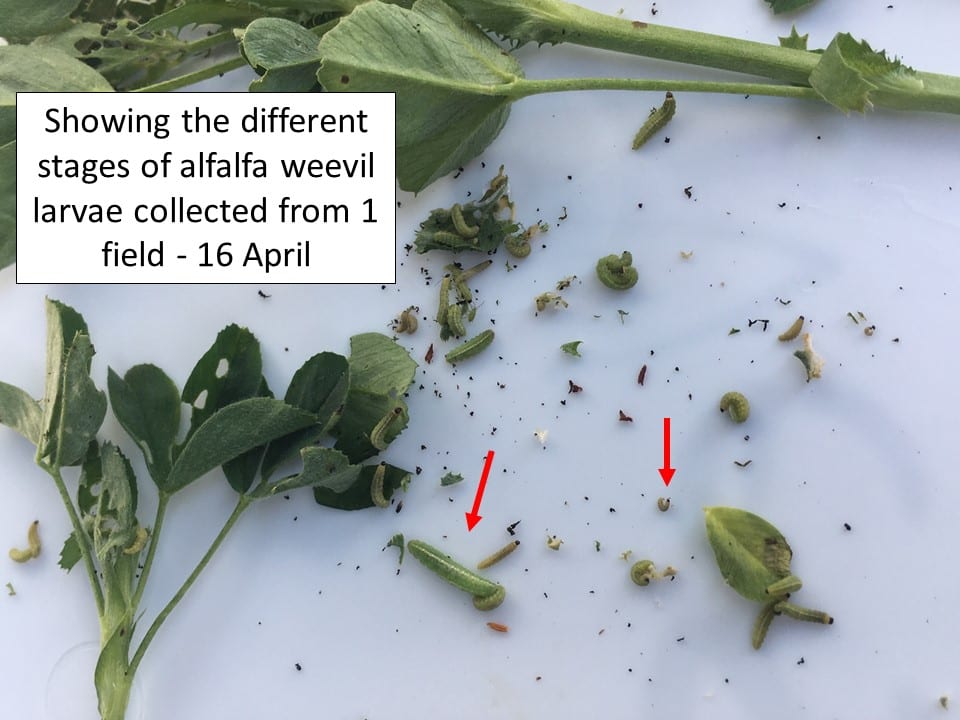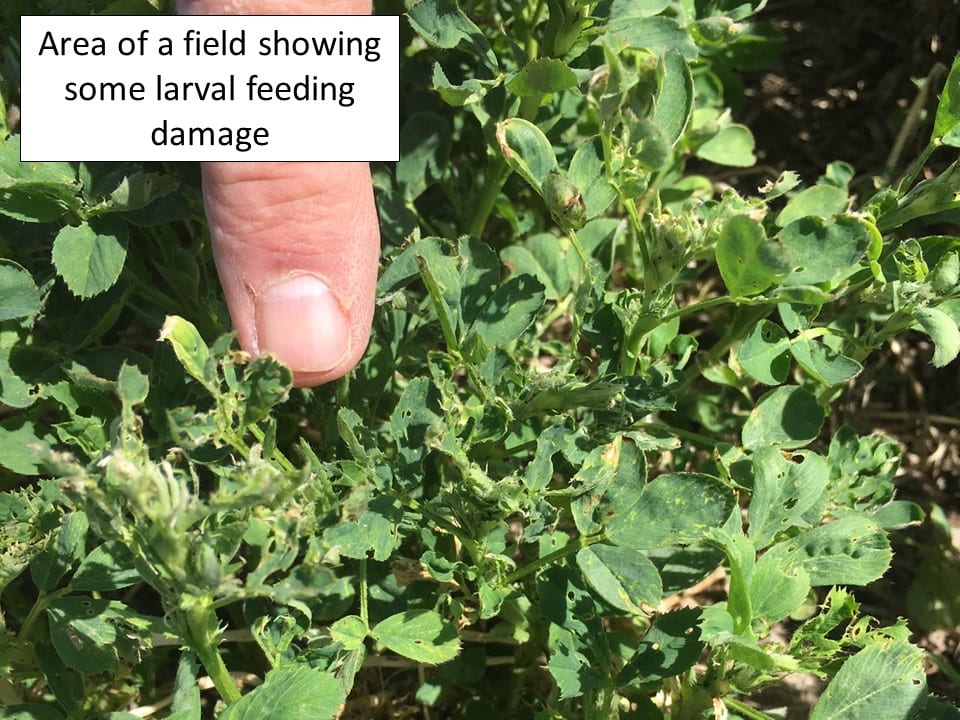–by Dr. Jeff Whitworth and Dr. Holly Davis
Alfalfa weevil populations seem to have “exploded” around north central Kansas in the past week. Tiny alfalfa weevil larvae were first detected in NC KS on 5 April, but probably a few started hatching a day or two prior. However, the infestation levels that were detected on 5 and 6 April were all well below 10%, and mostly less than 1%. In contrast, fields sampled on 16 April all greatly exceeded 100% infested using the stem shake bucket method and large numbers of different stages of larvae were detected.
To sample using the shake bucket method, randomly select individual alfalfa stems and quickly and vigorously shake them into a small white bucket. Then, count the number of dislodged larvae in the bucket and divide by the number of stems to get the infestation level. For example, 15 larvae from 10 stems = an average of 1.5 larvae/stem. Do this in several areas throughout each field to get a good indication of the alfalfa weevil infestation level and the stage of development of the weevil. One of the problems with the shake bucket method is that some stems have several larvae/stem while others have none (yet). Thus, the infestation level may appear to be higher than is the actual infestation.
However, in NC KS, with as many larvae as there are already (with more to come probably) and as much damage as we are starting to see in spots, it may be prudent to treat fields as soon as possible.
For information on insecticides registered for use for alfalfa weevil control, please see the KSU Alfalfa Insect Management Guide: https://www.bookstore.ksre.ksu.edu/pubs/mf809.pdf

